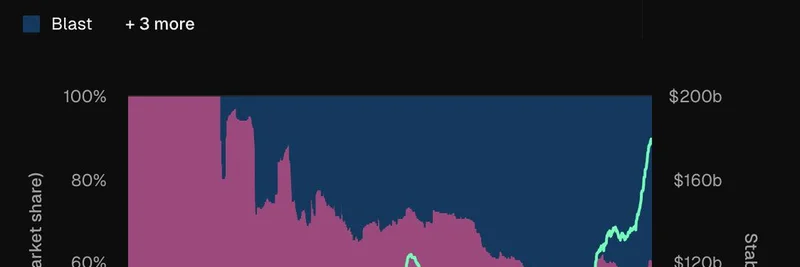Stablecoins have been a cornerstone of the crypto world, acting like digital dollars that keep their value steady amid the wild swings of other cryptocurrencies. They're backed by real-world assets, usually US dollars or Treasuries, making them perfect for trading, payments, and even earning yields. Recently, a tweet from Token Terminal highlighted a game-changing statement from US Treasury Secretary Scott Bessent, sparking buzz across the blockchain community.
Bessent's Bold Forecast on Stablecoins
In a recent address, Scott Bessent, the US Treasury Secretary, shared his optimistic view on the future of dollar-backed stablecoins. He believes the market could balloon past $2 trillion within the next three years. This isn't just hype—it's rooted in the growing demand for stable digital assets that can bridge traditional finance and the crypto ecosystem. As reported by Bloomberg, Bessent sees this expansion driving trillions in demand for US Treasuries, strengthening the dollar's global reserve status.
For context, the current stablecoin market hovers around $200-300 billion, with heavyweights like USDT (Tether) and USDC (Circle) leading the pack. Hitting $2 trillion would mean issuing an additional $1.7 trillion onchain, a massive influx that could supercharge liquidity across various blockchains.
Ethereum's Dominant Position and Potential Shifts
The Token Terminal tweet zooms in on Ethereum's role in this narrative. Right now, Ethereum commands about 60% of the stablecoin market share, as shown in their insightful chart. The visualization breaks down shares across major chains like Tron, Solana, Arbitrum, and others, with Ethereum in purple holding the lion's share.
Token Terminal crunches the numbers: If Ethereum's market share dips gradually to 50% over the next three years, that could still translate to $850 billion in new stablecoin supply on the network. Why the decline? Competition is heating up. Chains like Tron (with its low fees) and Solana (known for speed) are gaining ground, especially in regions with high remittance needs or DeFi activity.
But Ethereum isn't standing still. With upgrades like layer-2 solutions (think Optimism, Arbitrum, and Base), it's becoming more scalable and cost-effective. This could help it retain or even grow its slice of the pie, benefiting projects built on it—including the vibrant world of meme tokens.
How This Ties into Meme Tokens
At Meme Insider, we're all about those fun, community-driven meme tokens that often start as jokes but can turn into serious cultural phenomena. Stablecoins are the lifeblood for trading these tokens. More stablecoin liquidity means easier swaps, lower slippage, and bigger trading volumes on decentralized exchanges (DEXs) like Uniswap on Ethereum or Raydium on Solana.
Imagine $2 trillion in stablecoins flowing in—this could ignite a meme token renaissance. Projects on Ethereum, which hosts classics like PEPE or DOGE-inspired variants, stand to gain from increased onchain activity. But don't sleep on emerging chains; a diversified stablecoin landscape might spread the love to meme ecosystems on Base or Solana, where transaction costs are pennies.
Plus, with the US Treasury's endorsement-like stance, regulatory clarity could follow. Bessent's comments, as echoed in sources like The Defiant, suggest stablecoins could become major buyers of US debt, potentially lowering borrowing costs for everyone. For meme token creators and holders, this means a more stable (pun intended) environment to build and speculate in.
Looking Ahead: Opportunities and Challenges
This prediction isn't without hurdles. Regulatory scrutiny is ramping up, with concerns over transparency and reserves for stablecoin issuers. Yet, Bessent's proactive approach—committing to enhance the dollar's status—signals a friendlier policy era ahead.
For blockchain practitioners, this is a call to action. Dive into stablecoin-integrated DeFi protocols, explore cross-chain bridges, or even launch your own meme token leveraging this liquidity wave. Keep an eye on metrics from platforms like Token Terminal for real-time insights.
In the end, if Bessent's vision pans out, we're looking at a transformed crypto landscape where stablecoins aren't just tools—they're economic powerhouses. Whether you're a meme token maxi or a DeFi degens, this growth could open doors you didn't even know existed. Stay tuned to Meme Insider for more updates on how this unfolds.


